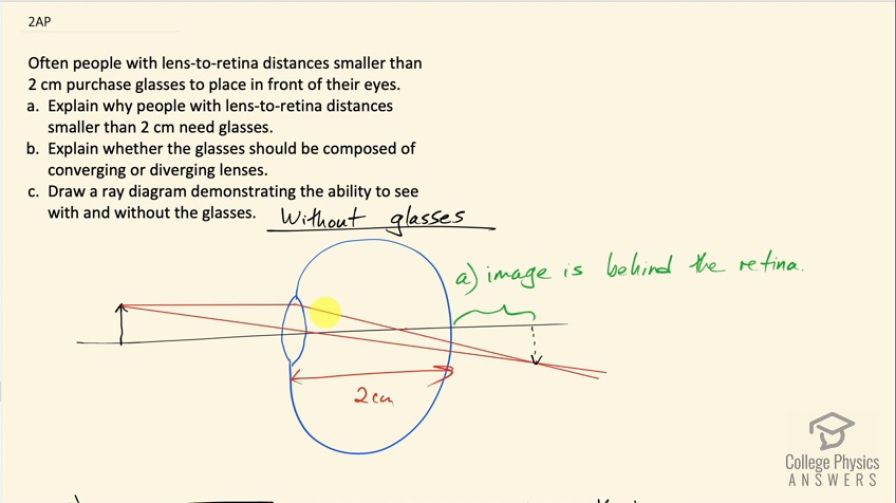Question
Often people with lens-to-retina distances smaller than 2 cm purchase glasses to place in front of their eyes.
- Explain why people with lens-to-retina distances smaller than 2 cm need glasses.
- Explain whether the glasses should be composed of converging or diverging lenses.
- Draw a ray diagram demonstrating the ability to see with and without the glasses.
Final Answer
- The image is behind the retina.
- A converging lens is needed to bring the image to the retina.
- Please see the solution video.
Solution video
OpenStax College Physics for AP® Courses, Chapter 26, Problem 2 (Test Prep for AP® Courses)

vote with a rating of
votes with an average rating of
.
Video Transcript
This is College Physics Answers with Shaun Dychko. When a person has a lens to retina distance that's less than 2 centimeters then they will be far-sighted because there is an image being produced behind the retina and they will be able to see things that are really far away but when things are close there needs to be more convergence to bring the image closer to the retina. So they need glasses to project the object... so to speak... over here and I say to speak because the object becomes an image that's further away from the eye and puts it far and so the eye can then see it since the eye is far-sighted. Okay! So the glasses for this person need to be converging lenses in order to produce this image further away that the eye will then be able to see.